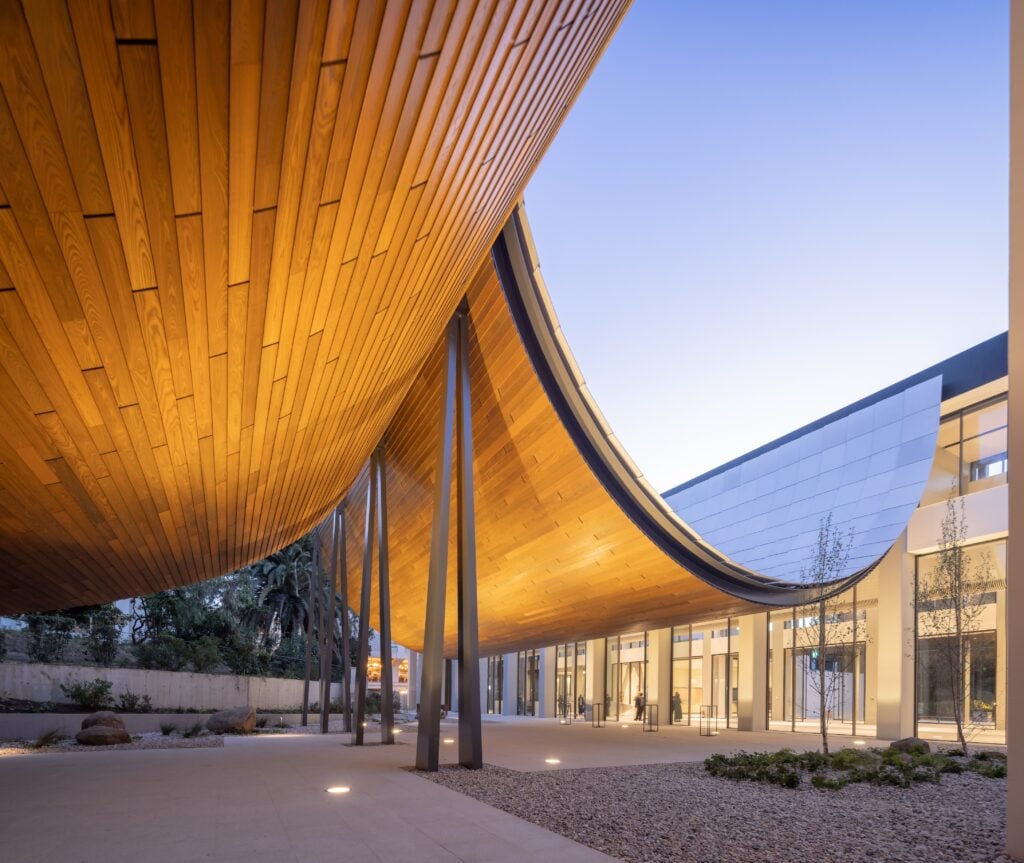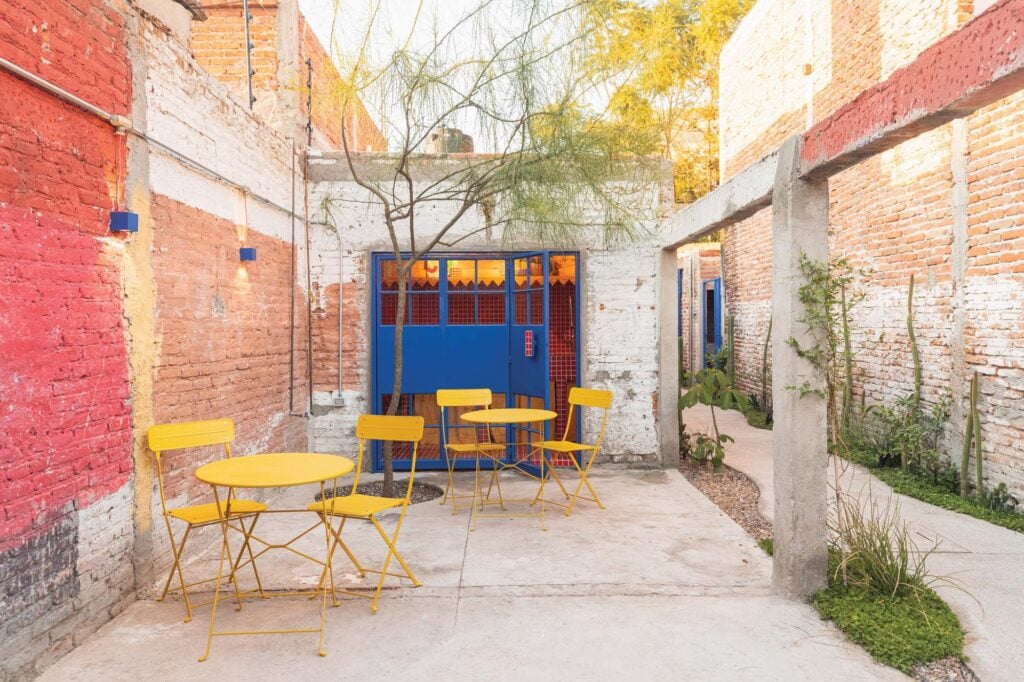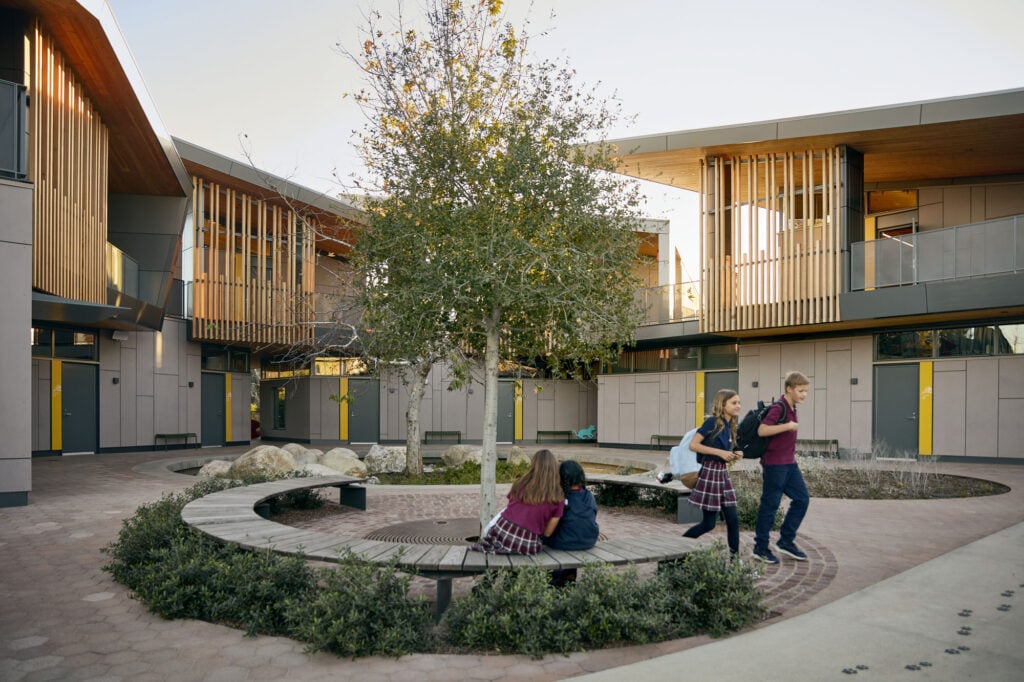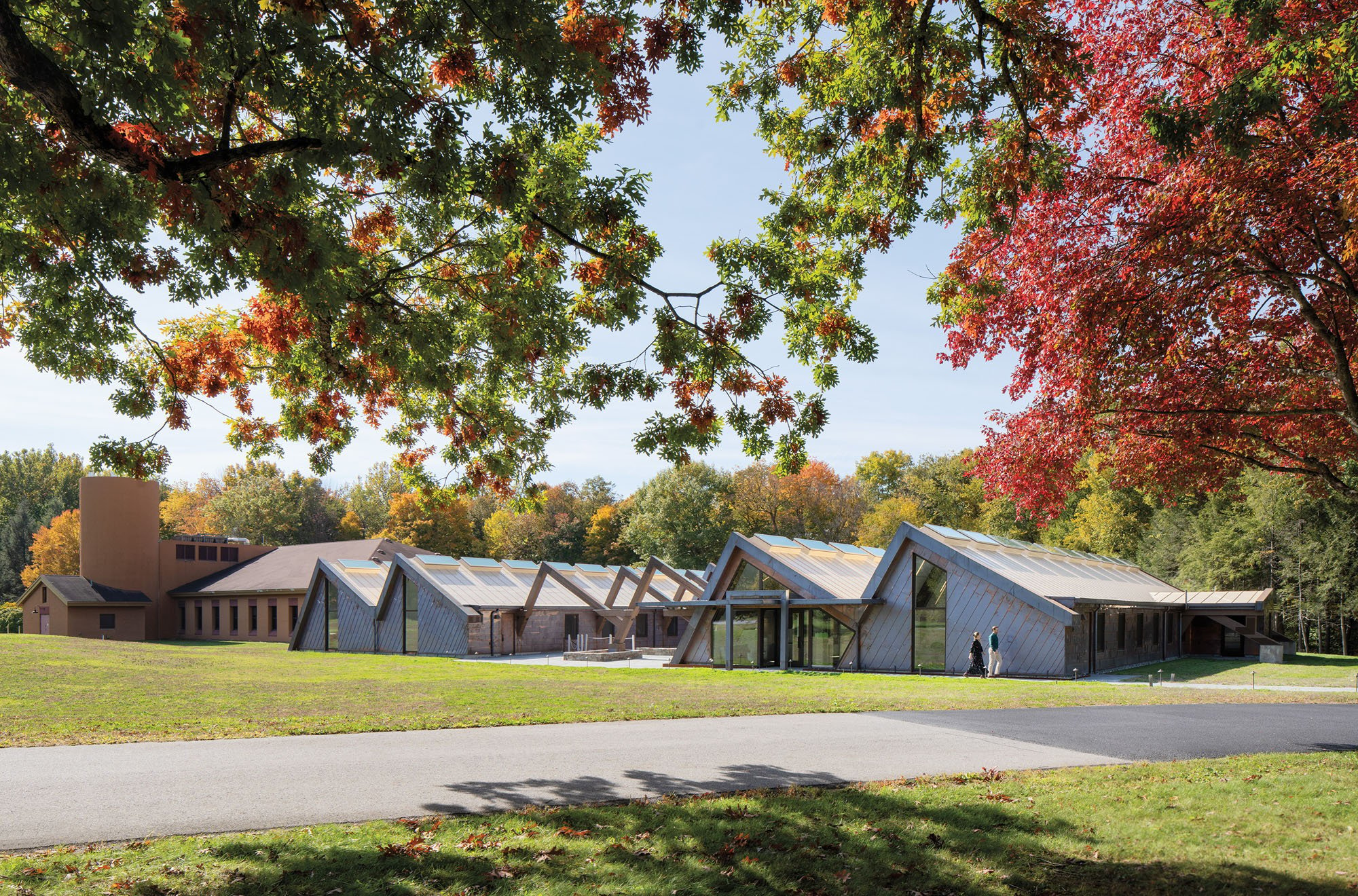
July 19, 2023
The Cary Institute of Ecosystem Studies Gets a Well-Deserved Makeover
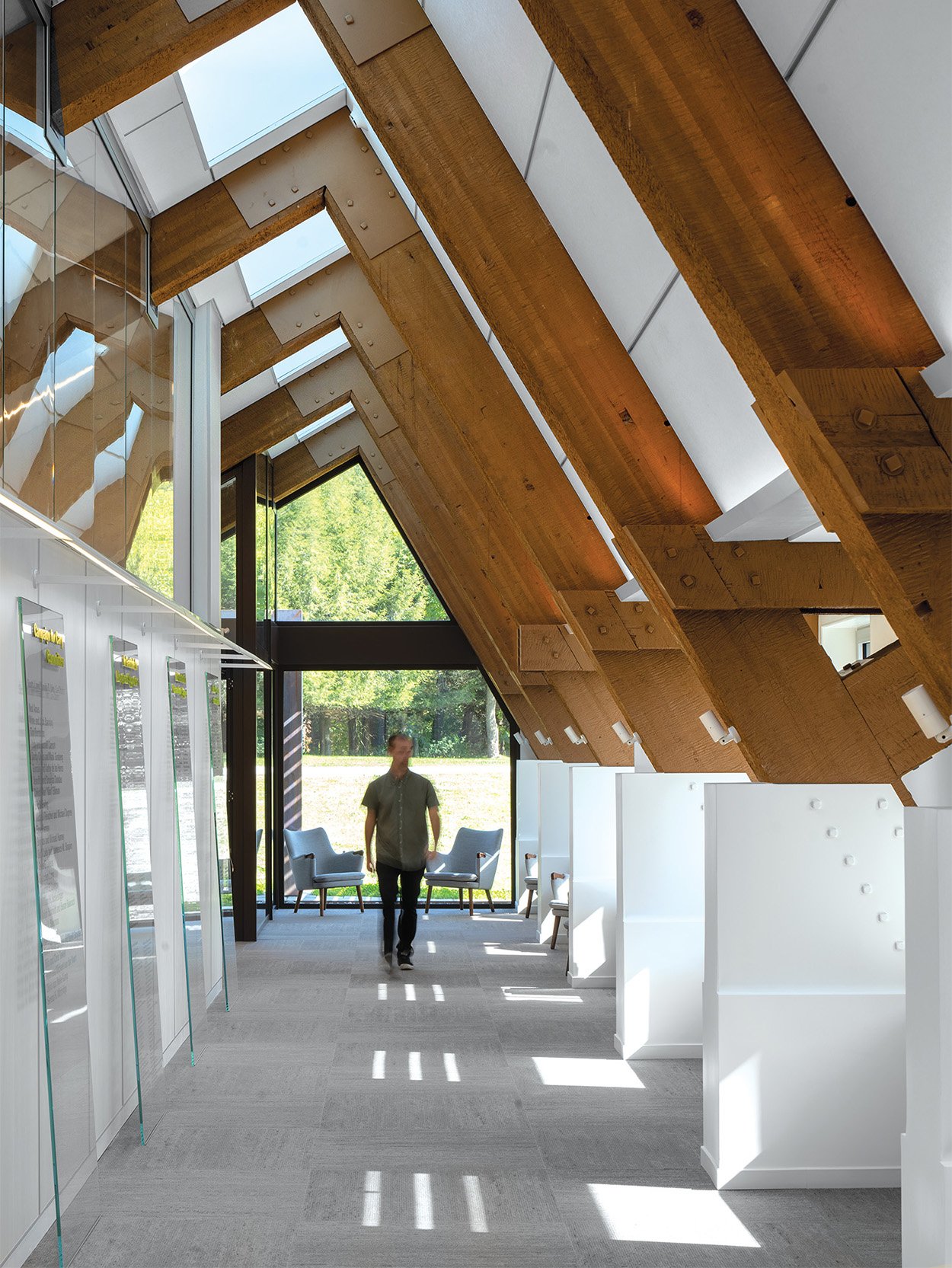

Re-envisioning the Visionary
“It was a visionary project, but within a couple years of opening it failed,” says Bruce Becker, principal of Becker + Becker, the Connecticut architecture firm that was tasked with overhauling the Cary Institute in 2020. The thermal solar panels froze, the skylights leaked, and a woodstove had to be lit in the winter. During the summer months, the solar heating system worked overtime, filling a massive basement that stored water, which was then circulated throughout the rest of the building to provide radiant heat.
To top it all off, the earthen berms and low ceilings made the place feel like a cave, a notion that persistent drips from the leaking roof did little to dispel. Within five years, the Cary Institute’s founder, Dr. Gene Likens, had to replace the solar system with propane. “It was too cold in the wintertime and too hot in the summertime,” recalls the 88-year-old scientist. “The building was using way too much electricity, so my role as an ecologist was to dismantle the solar system. That was really hard to do because I was all in favor of solar.”
Still, incredible science happened there. Dr. Likens is better known for his 1968 discovery of acid rain and his work to limit sulfur dioxide emissions from coal-fired power plants than he is for taking down some old solar panels. The researchers who called Cary home made do, bringing in portable fans and air-conditioning units in the summer and using buckets to catch drips. Today the institute’s main research areas include urban ecology, freshwater ecosystems, and disease ecology, especially around tick-borne illnesses and even AI modeling of pandemics and their spillover into animal populations.
Around 2016 the building finally became unbearable. The last straw came that summer, says current director Dr. Joshua Ginsberg, when a fire broke out in his office. “The only thing that saved us was that the wood above [the circuit breaker where the fire started] and the wall itself were so incredibly saturated that they didn’t burn,” he says.

On the Cutting Edge
The institute brought in Becker, an architect with a background in net-zero design. “Our challenge was to rehab the building so that it reflected the values of this groundbreaking environmental institution with systems that actually worked and also to create a beautiful work environment,” he says.
He began by stripping the structure down to its core, removing a secondary roof that was installed to stop leaks and the earthen berms that surrounded the building on three sides to reveal Wells’s original sawtooth volume. Extra insulation was added to the roof, which was made watertight, and triple-glazed windows were inserted in the ends of the A-frame forms, letting sunlight into the space.
The A-frame structures themselves, made of early glue-laminated mass timber beams, were kept, preserving their embodied carbon. Horizontal collar ties that housed lighting, on the other hand, were removed, transforming the space from cramped to open. The hot water holding tank, which was the cause of so many intolerable summers, was removed and converted to an outdoor terrace for lectures and receptions. The building’s triangular exterior walls are clad in 92 percent recycled copper that’s beginning to turn a dusky, mottled purple. If it weren’t for the research that happened inside, it would likely be bright green already.
There are still solar panels, but they’re modern photovoltaics, and instead of being mounted on the roof, they form a one-acre array on the ground, in a field across the street. According to Ginsberg, the array prevents the amount of carbon emissions that would take more than a hundred acres of forest to sequester. Thanks to modern improvements in building technology, the institute’s redesign is 48 percent more energy efficient than a conventional building of the same size and aims to meet LEED Platinum, Living Building Future Zero-Carbon, Zero-Energy, and Core Green Certification—although the client did not pursue the actual certifications.
Ginsberg is proud that the Cary Institute can once again boast a building that’s on the cutting edge of sustainability. “I’ll give you three words,” he says. “Live your mission. We believe that we can make a difference in our research, but we have to lead by example.”
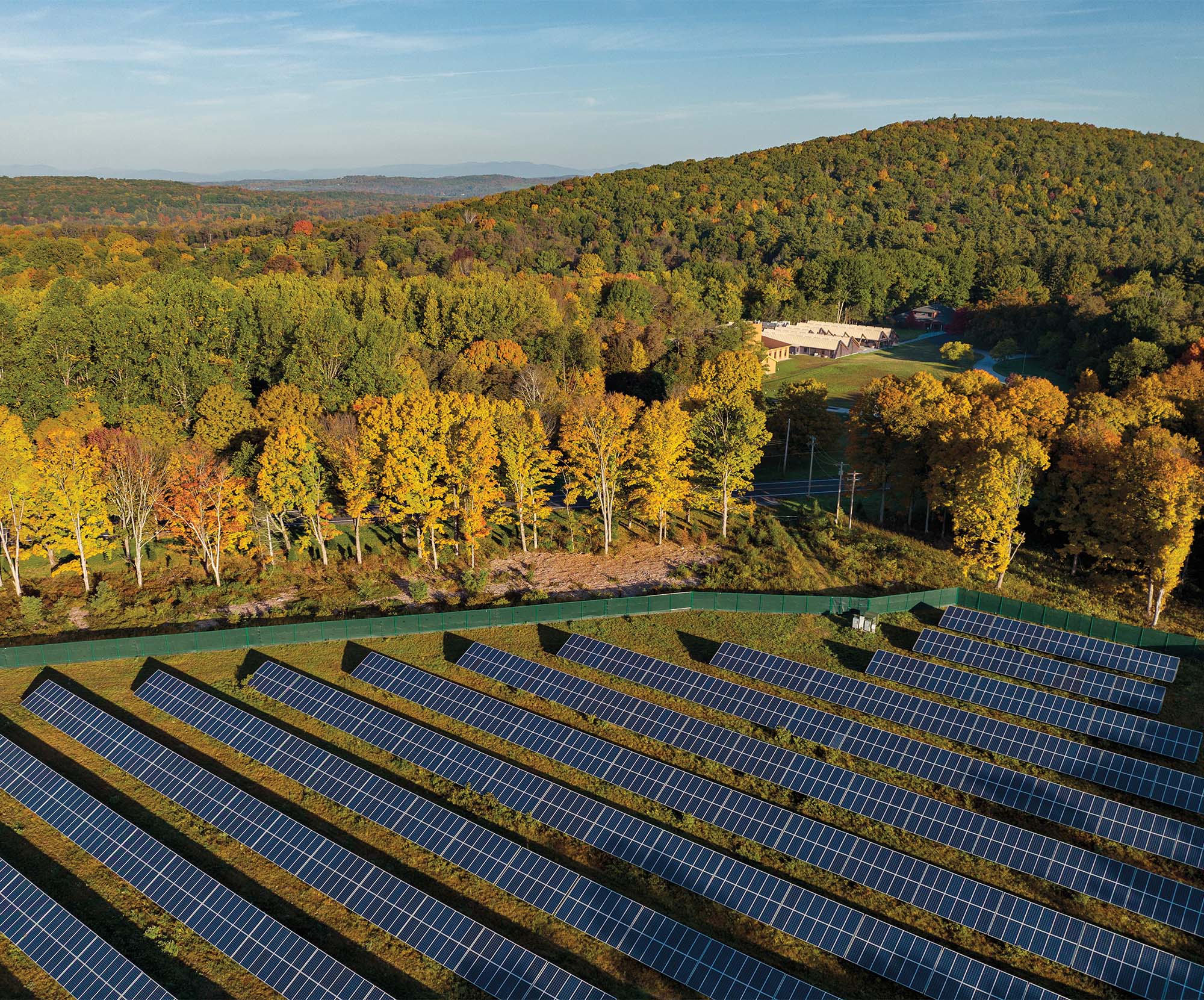

Would you like to comment on this article? Send your thoughts to: [email protected]
Related
Projects
Kengo Kuma Designs a Sculptural Addition to Lisbon’s Centro de Arte Moderna
The swooping tile- and timber-clad portico draws visitors into the newly renovated art museum.
Projects
In Mexico, a Coworking Space Captures a Community’s Creative Spirit
Santa Tere Espacio, a colorful adaptive reuse project in San Miguel de Allende, is a collaboration between Oficina de Diseño Colaborativo, Maye Colab, and Atelier TBD.
Projects
NBBJ’s Westmark School is Designed for Learning Differences
The firm worked with landscape architects SWA to create an education space dedicated to both physical and emotional well-being.



